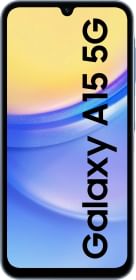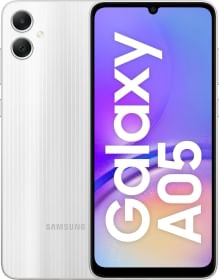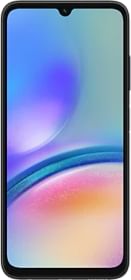The 4K format has seen an unprecedented adaptation rate and as the technology is becoming more affordable more people will get onboard. With content streaming platforms like Youtube supporting 4K content, more and more content creators are shooting in Ultra HD.
Even for hobbyists, the 4K Video recording has become a must-have feature in 2018. That’s precisely the reason why most still camera makers are now getting cosy with 4K video recording options.
If you are also on a hunt for a DSLR grade 4K camera to shoot Vlogs for Youtube in UHD or to capture high-resolution life moments, here are the options you can consider for buying:
Panasonic Lumix GH5S

The Panasonic Lumix GH5S is right at the top when it comes to 4K video recording capable mirrorless cameras. It is one of those rare DSLR cameras that shoot videos better than they capture still images.
The Panasonic Lumix GH5S mirrorless camera can shoot 4K videos in UHD (3840 × 2160p) and DCI 4K (4096×2160p) resolutions at 60 frames per second. The Panasonic Lumix GH5S along with its older sibling Lumix GH5 is probably only DLSR in the market that can do 4:2:2 10-bit video recording which results in better colors in your 4K footage.
Type: Mirrorless | Sensor size: CMOS | Resolution: 10.2MP | Lens: Micro Four Thirds | Viewfinder Type: Electronic | Screen: 3.2-inch vari-angle display, 1,620,000 dots | Maximum continuous shooting speed: 12fps | Video Recoding: up to 4K @ 60fps | Image stabilization: No |
Pros
- Great viewfinder and touchscreen
- Multi-aspect sensor design
- Records excellent videos
- 4K UHD and DCI 4K at 60fps
- Slo-mos @ 240fps
- Lacks image stabilization
- Stills are not that great
- Locking focus can be an issue at times
Panasonic Lumix GH5

Before the launch of its successor, it was considered to be the best 4K mirrorless camera in the market. Since its successor has snatched that lead spot, the Lumix GH5 has become a more affordable option.
It was actually the first DSLR camera which was able to record videos in UHD 4K and DCI 4K (aka Cinema 4K) at 60 FPS. The camera is capable of doing internal recording as well as providing live preview via HDMI cable. Like its successor, it is also weather resistant.
Type: Mirrorless | Sensor size: CMOS | Resolution: 20.3MP | Lens: Micro Four Thirds | Viewfinder Type: Electronic | Screen: 3.2-inch vari-angle TFT LCD display, 1,620,000 dots | Maximum continuous shooting speed: 12fps | Movies: 4K | Image Stabilization: No |
Pros
- Great viewfinder and touchscreen
- Multi-aspect sensor design
- Records excellent videos
- 4K UHD and DCI 4K at 60fps
- Slo-mos @ 240fps
Cons
- Not so great stills
- Autofocus struggles at times
Sony Alpha A7 III

The Sony Alpha A7 III is another exciting mirrorless camera that can record videos with 4K resolution. This hybrid DSLR camera from the Japanese company is one of the compelling options for those who are looking for best 4k video shooting capable mirrorless cameras.
The Sony Alpha A7 III comes with a 24MP BSI CMOS full-frame sensor which can record videos in 4K (3840 x 2160) at 24 frames per second. However, Sony uses 1.2x crop for 4K videos shot at 30P. The camera offers excellent low light shooting capabilities as it comes with in-body image stabilization.
Type: Mirrorless | Sensor size: CMOS | Resolution: 24MP | Lens: Sony E mount | Viewfinder Type: Electronic | Screen: 3-inch tilting TFT LCD, 921,600 dots | Maximum continuous shooting speed: 10fps | Movies: 4K | Image Stabilization: Yes |
Pros
- Excellent image quality
- Good AF performance
- Uncropped 4K video @24fps
- Image Stabilization
- Superb battery life
Cons
- Complex UI
- Limited touchscreen controls
- Not weatherproof
Nikon D850

Not long ago Nikon announced its D850 DSLR camera which was the first 4K camera from the famous brand. It is not really that affordable but this 4K supported DSLR camera doesn’t really hold back when it comes to specs. Nikon has packed in a fresh 45.4MP full-frame sensor, a highly advanced 153-point AF system and the camera is capable of shooting 4K UHD Videos at 30p/25p/24p without any sensor cropping.
If you want, you can also record slow-mos at 120 frames per second in full HD resolution. It is also worth mentioning that the Nikon D850 comes with a dedicated port for microphone and headphone.
Type: DSLR | Sensor size: Full-frame CMOS | Resolution: 45.4MP | Lens: Nikon F | Screen: 3.2-inch tilt-angle touchscreen, 2,359,000 dots | Viewfinder Type: Optical | Maximum continuous shooting speed: 7fps | Movies: 4K | User level: Expert
Pros
- Excellent dynamic range
- Really good autofocus system
- weather-sealed construction
- Good tilting display
Cons
- Live View autofocus lags
- No inbuilt pop-up flash
Sony Alpha A6500

Type: Mirrorless | Sensor size: APS-C | Resolution: 24.2MP | Lens: Sony E mount | Screen: 3-inch tilting touchscreen, 921k dots | Viewfinder Type: Electronic| Maximum continuous shooting speed: 11fps | Movies: 4K |
Pros
- Excellent image quality
- Crips 4K video capture
- Snappy AF system
- 5-axis in-body image stabilization
Cons
- Not so responsive touchscreen
- No headphone jack
Panasonic GX85

It is probably the cheapest mirrorless camera in this list but it certainly isn’t the least when it comes to 4K video recording capabilities. The Panasonic GX 85 Dual IS Mark II system which means the camera has in-body stabilization. At the same time, it can take advantage of in-lens stabilization to capture smooth videos and images.
The Panasonic GX85’s 16-megapixel sensor can record 4K UHD videos at best 30frame per second. Its touchscreen interface is among the better ones in the market.
Type: Mirrorless | Sensor size: Micro Four Thirds | Resolution: 16MP | Lens: Micro Four Thirds | Screen: 3.0-inch display, 1,040,000 dots | Viewfinder Type: EVF | Maximum continuous shooting speed: 9fps | Movies: 4K |
Pros
- Customizable controls
- Dual image stabilization
- Updated sensors produce crisp results
Cons
- No headphone port
- Noise reduction a little harsh
Fujifilm X-H1

The X-H1 is second 4K capable mirrorless camera from the renowned Japanese photography equipment maker. This Fujifilm camera comes with a 24MP X-Trans CMOS sensor manages to deliver both stills and videos in good quality.
The Camera manages to shoot 4K in both DCI and UHD resolutions. The X-T2 successor also comes with 8 way AF-joystick and two-axis tilting screen. The Fujifilm mirrorless camera also captures videos with 8-bit 4:2:2 color depth. On the downside, it only lets you record 4K videos for a duration of 15 minutes in one stretch.
Type: Mirrorless | Sensor size: APS-C | Resolution: 24.3MP | Lens: Fuji X | Screen: 3.0-inch tilt-angle display, 1,040,000 dots | Viewfinder: EVF | Maximum continuous shooting speed: 8fps | Movies: 4K | User level: Intermediate/Expert
Pros
- Excellent image and Video quality
- 5-axis image stabilization
- Solid weather resistant body
- Supports HDR videos
Cons
- Face and Eye detection not that great
- 4K recording limited to 15 mins
Sony Alpha a7S II

The Sony Alpha a7 III’s slightly older sibling is also a worthy 4K camera option. It comes with a highly sensitive 12.2MP Camera sensor and 5-axis in-body image stabilization which is certainly helpful when recording videos in 4K UHD.
The Alpha a7S II mirrorless shooter is known for offering good dynamic range, and its sensor’s high sensitivity to light. It manages to record 4K videos without any cropping with 4:2:2 bit colors.
Type: Mirrorless | Sensor size: Full-frame CMOS | Resolution: 12.2MP | Lens: Sony E mount | Screen: 3.0-inch tilting display, 1,228,800 dots | Viewfinder: EVF | Maximum continuous shooting speed: 5fps | Movies: 4K |
Olympus OM-D E-M10 Mark III

The Olympus OM-D E-M10 Mark III is another mirrorless SLR type camera that also punches above its price tag. The camera is based on TruePic VIII processor paired with a 15 Live MOS sensor. It comes with 121-point contrast detect AF system which is not the most accurate one in its class.
It can record videos in 4K UHD resolution at 24fps and 30fps. It is also capable of shooting high-speed 120 fps mode is available at the 720p setting. Olympus has built 5-axis image stabilization right into the body which certainly ensures jerk-free videos.
Type: Mirrorless | Sensor size: Micro Four Thirds | Resolution: 16MP | Lens: Micro Four Thirds | Screen: 3.0-inch free-angle display, 1,037,000 dots | Viewfinder: EVF | Maximum continuous shooting speed: 8.6 fps | Movies: 4K |
Pros
- Stylish, compact body
- Well-placed controls
- High-resolution OLED viewfinder
- Excellent stabilization capabilities
Cons
- No USB charging
- oversaturated color rendition in Auto mode
- Aggressive Noise reduction
Sony Cyber-shot RX 10 IV

If you don’t want to get into the nitty-gritty of photography or videography and are just looking to point and shoot 4K videos, then the Sony Cyber-shot RX 10 IV will be a great option.
This compact point and shoot from Sony has a 20.2-megapixel sensor which 24-600mm zoom lens at f/2.4-4 aperture. This little thing packs a whopping 315 phase-detect autofocus points. This versatile camera manages to capture 4K videos at 30fps and super slow-mos at 960 in HD resolution.
Type: Compact | Sensor size: 1-inch CMOS | Resolution: 20.2MP | Lens: 24-600mm, f/2.4-4 | Screen: 3-inch tilting touchscreen, 1.44 million dots | Viewfinder: EVF | Maximum continuous shooting speed: 24fps | Movies: 4K |
Pros
- Long, very sharp lens
- Good image and Video quality
- Impressive subject tracking
- Super Slo-mos
Cons
- Large and heavy
- Expensive






























